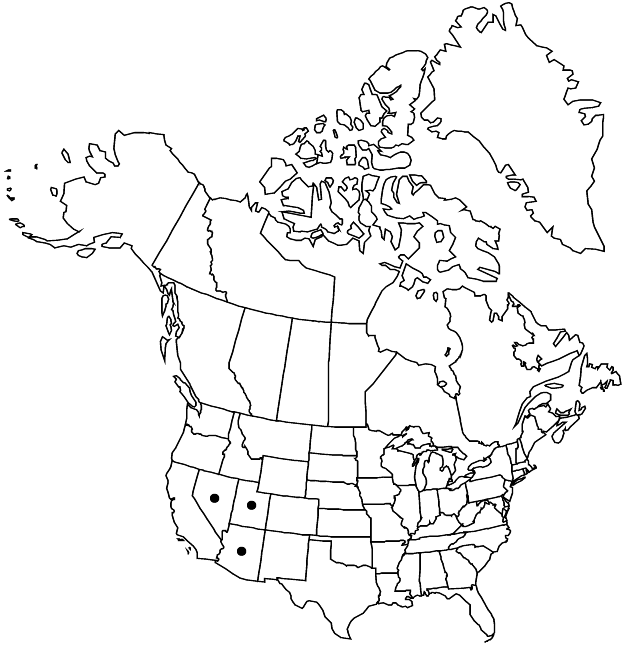Eriogonum darrovii
Leafl. W. Bot. 4: 267. 1946.
Herbs, spreading, 0.5–1.5 (–2) dm, sericeous, tawny to reddish. Stems: aerial flowering-stems spreading, 0.3–0.5 dm, sericeous. Leaves basal and cauline; basal: petiole 0.5–2 cm, sericeous, blade obovate to rounded, 0.5–1.5 × 0.5–1.5 cm, sericeous and greenish on both surfaces; cauline: petiole (0–) 0.1–1 cm, sericeous, absent distally, blades opposite, obovate to rounded, 0.2–1 × 0.2–1 cm, similar to basal blade. Inflorescences cymose, distally uniparous due to suppression of secondary branches, diffuse, 3–15 × 3–20 cm; branches sericeous; bracts 1–3 × 1–2 mm. Peduncles absent. Involucres somewhat appressed to branches, turbinate-campanulate, 2–2.5 × 1.5–2 (–2.5) mm, sericeous; teeth 5, spreading, 0.8–1.5 mm. Flowers 1.5–2 mm; perianth pale-yellow to pink or red, hirtellous with whitish hairs; tepals dimorphic, those of outer whorl fan-shaped, inflated and hooded distally, those of inner whorl lanceolate; stamens included, 1.5–2 mm; filaments pilose proximally. Achenes brown, 3-gonous, 1–5 mm.
Phenology: Flowering May–Sep.
Habitat: Gravelly or clayey calcareous flats and slopes, saltbush and sagebrush communities, pinyon-juniper woodlands
Elevation: 1550-1900 m
Distribution

Ariz., Nev., Utah.
Discussion
Of conservation concern.
Eriogonum darrovii is of special concern in Nevada and Arizona. In Arizona, it is known only from scattered locations in northern Mohave (west of Mt. Trumbull) and northwestern Coconino (Fredonia area) counties. In Nevada, it is known from White Valley (Nye County) and Spring Valley from Majors Place (White Pine County) to Pony Springs (Lincoln County). It is found also in the Buckskin Mountains of Kane County, Utah, and Coconino County, Arizona.
Selected References
None.
Lower Taxa
"narrowing" is not a number."dm" is not declared as a valid unit of measurement for this property."dm" is not declared as a valid unit of measurement for this property.